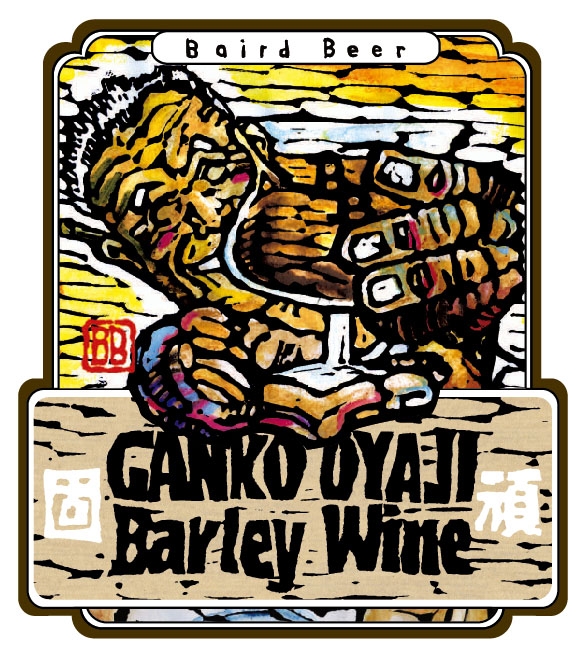
Cuisine has its seasons and so do beverages. As winter sets in, beer drinkers tend to move toward stronger brews. Rich malts and warming alcohols match the cold night air as perfectly as sitting beside a wood fire. One of the classic examples of strong beer is barleywine, a style that showcases complex flavors, including caramel, fruit and toffee. Aged barley wines can take on the characteristics of sherry or port, perhaps inspiring this style’s vinous name. As this beer has a very full mouthfeel and high alcohol (8-12%) content, it is best served in a snifter like a brandy or a cognac and enjoyed with rich foods or after dinner.
The barleywine style dates back to a historic mode of British brewing called parti-gyle. In most modern beers, brewers combine the first liquid that comes off the mash (called “first runnings”) with more dilute liquid produced by adding hot water. Think of the first cup of tea versus subsequent ones brewed with the same leaves—each cup gets less intense. In the parti-gyle method, brewers made one beer from the first runnings, which came out much stronger because the yeast had more sugars to ferment, and weaker beers from the second (and sometimes even third) runnings. Brewers would age these stronger beers to mellow their harsh booziness, calling them old ales, stock ales or strong ales.
U.K. beer historian Martyn Cornell found the earliest known use of the term “barley wine” referring to a specific brewer’s beer. The reference was to “Bass’ Barley Wine” in an 1870 British Medical Journal analysis of the alcohol and acid contents of old ales versus mild ales (beers that were drunk fresh).
The article also reveals that, in the 19th century, these strong beers were considerably more acidic than their younger counterparts, suggesting lactic acid bacteria provided some tartness to balance the residual sugars that tend to give strong ales their distinctive sweetness.
However, contemporary barleywines do not typically employ fermentation microbes aside from the “clean” brewer’s yeast saccharomyces cerevisiae. Traditional English barleywines can be hard to find in Japan but are worth the effort if you can locate one. Thomas Hardy’s Ale (11.9%) and J.W. Lee’s Vintage Harvest Ale (11.5%) are rich, sweet and complex.
While Hardy’s was discontinued in 2008, bottles still circulate, and these beers can age well for decades. American versions are becoming easier to find, but keep in mind that they are much hoppier than their English counterparts and can actually be quite bitter. Anchor Steam Old Foghorn (10%), the first American barleywine, celebrates its 40th anniversary this year. It showcases the Cascade hop in a more balanced approach and is very drinkable. Sierra Nevada Bigfoot (9.6%) is perhaps most representative of the American style—when they first developed their recipe in 1983, the lab to which they sent a sample for analysis said, “Your barleywine is too bitter,” to which the brewer replied, “Thank you.”
Stone Old Guardian (11%) is also quite hoppy and impressively drinkable, especially after a few years of aging, due to a semi-dry finish. All barleywines benefit with a few years of age, but I find this is particularly true for the American style ones, as it mellows the hop bitterness and allows the flavors to meld. Harvestmoon Barleywine, gold medalist in the 2015 International Beer Cup, has been brewed since 2000, making it one of Japan’s longest-running examples of the style. At 8%, it clocks in at the lower end of the scale on strength and its mouthfeel is also thinner than most.

On the other end of the spectrum is Yo- Ho Brewing’s Barrel-Aged Barley Wine, whose 2015 version (11.5%) was aged in a sherry barrel that has been holding liquors since 1950. I have yet to try this year’s version but, in general, wood provides a slight astringency to this beer that helps balance its intense caramel sweetness and adds complexity.
The brewer says this particular barrel contributed aromas of apricot. Baird Brewing Company’s Ganko Oyaji (9%) splits the difference and provides a balanced take on the English style, while Sankt Gallen’s El Diablo (10%) goes all out on the American style with tons of hops packed into its distinctive conical purple bottle. The stronger, hoppier versions benefit from aging and can be stored standing up in a dark, cool space for years.





